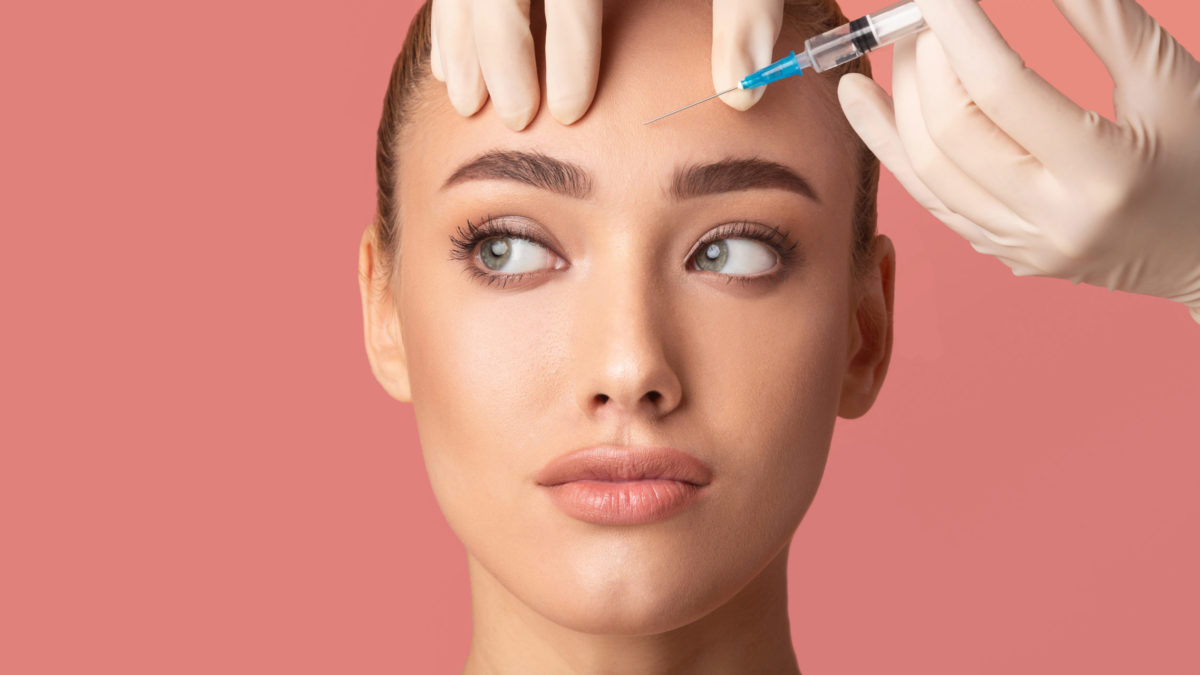Forehead lines are one of the earliest signs of aging, often caused by years of repeated facial expressions like raising the eyebrows. For those seeking a non-surgical solution to smooth these lines and achieve a youthful appearance, Botox Injections in Dubai have proven to be a highly effective treatment. This article explores how Botox works specifically to target forehead lines, offering a smooth, rejuvenated look without the need for invasive procedures.
Understanding Forehead Lines
What Causes Forehead Lines?
Forehead lines, also known as horizontal lines or expression lines, develop due to repeated movements of the frontalis muscle—the large muscle responsible for lifting the eyebrows. When this muscle contracts, it pulls the skin upward, causing it to fold. Over time, the skin loses its elasticity and collagen, making it less able to bounce back after being creased. As a result, permanent lines form on the forehead.
Factors that contribute to the development of forehead lines include:
- Aging: The natural aging process leads to a reduction in collagen and elastin, which causes skin to lose its firmness.
- Sun exposure: Prolonged exposure to UV rays can damage the skin and accelerate the appearance of wrinkles.
- Facial expressions: Repeated raising of the eyebrows when expressing surprise or interest causes the frontalis muscle to contract, deepening the lines over time.
- Genetics: Some people are more prone to developing forehead lines due to their genetic makeup.

Dynamic vs. Static Forehead Lines
Forehead lines can be categorized into two types:
- Dynamic lines: These lines only appear when the frontalis muscle is in motion, such as when raising the eyebrows. Dynamic wrinkles are the first signs of aging and can be effectively treated with Botox.
- Static lines: Over time, dynamic lines can become static, meaning they are visible even when the face is at rest. While static lines are more challenging to treat, Botox can still help reduce their appearance.
How Botox Works to Smooth Forehead Lines
Targeting the Frontalis Muscle
Botox works by targeting the frontalis muscle, which is responsible for the contraction that causes forehead lines. When Botox is injected into this muscle, it temporarily blocks the release of acetylcholine, the neurotransmitter that signals the muscle to contract. As a result, the muscle relaxes, and the overlying skin smooths out.
By reducing muscle activity in the forehead, Botox prevents the skin from creasing and forming new lines while also softening the appearance of existing wrinkles.
The Botox Injection Process
The Botox treatment process for forehead lines is simple and quick:
- Consultation: During the initial consultation, a trained practitioner will assess the patient’s forehead and determine the appropriate dosage and injection points based on the severity of the lines and the patient’s aesthetic goals.
- Injection: The practitioner uses a fine needle to inject small amounts of Botox into multiple points along the forehead. The number of injections varies depending on the size of the treatment area and the depth of the lines.
- Post-Injection Care: After the treatment, patients are advised to avoid rubbing the injection sites or lying down for at least four hours to prevent the Botox from migrating to unintended areas. Most patients can resume their normal activities immediately after the procedure.
Immediate and Long-Term Effects
While the Botox injections begin working almost immediately, it typically takes three to five days for the effects to become noticeable. Full results are usually visible within two weeks, at which point the forehead appears smoother, and the lines are significantly reduced.
The results of Botox for forehead lines last an average of three to six months. As the effects wear off, muscle activity gradually returns, and the lines may reappear. However, with regular Botox treatments, the severity of the lines can be reduced over time, as the muscles become conditioned to remain more relaxed.
The Benefits of Botox for Forehead Lines
Non-Invasive and Convenient
One of the biggest advantages of Botox for forehead lines is that it is a non-invasive procedure. Unlike surgical options such as a forehead lift, Botox does not require incisions, anesthesia, or a lengthy recovery period. Most patients can undergo the treatment during their lunch break and return to their regular activities immediately after.
Effective for Both Prevention and Correction
Botox is effective for both preventing and treating forehead lines. Many individuals in their late 20s and early 30s opt for Botox as a preventative measure, aiming to stop the lines from forming in the first place. By relaxing the frontalis muscle early on, Botox can delay the onset of deep wrinkles.
For those who already have visible forehead lines, Botox serves as a corrective treatment, softening the lines and creating a more youthful appearance. It can also prevent existing lines from becoming deeper over time.
Customizable Results
Botox treatments for forehead lines can be customized to meet each patient’s unique needs. Some patients prefer a subtle softening of their lines while maintaining some natural movement, while others may want a more dramatic smoothing effect. A skilled practitioner will tailor the dosage and injection placement to achieve the desired results, ensuring a natural and balanced look.
Minimal Side Effects
Botox is considered a safe treatment when performed by a qualified and experienced professional. Most patients experience minimal side effects, which may include temporary redness, swelling, or bruising at the injection sites. These effects typically resolve within a few hours to a couple of days. Serious complications are rare, especially when the treatment is administered by a skilled injector.
How Botox Compares to Other Treatments for Forehead Lines
Botox vs. Dermal Fillers
While Botox is highly effective for treating dynamic forehead lines, dermal fillers may be a better option for deep static lines. Fillers work by adding volume to the skin and filling in wrinkles, making them a good choice for lines that are visible even when the face is at rest. In some cases, Botox and fillers can be used together to achieve optimal results.
Botox vs. Laser Treatments
Laser treatments can improve the texture and tone of the skin, reducing the appearance of fine lines and wrinkles by stimulating collagen production. However, lasers do not address the muscle contractions that cause dynamic wrinkles like those on the forehead. Botox remains the gold standard for targeting these types of lines, while lasers may be more suitable for improving overall skin quality.
Botox vs. Surgical Procedures
For patients with more advanced signs of aging, such as sagging skin and deep wrinkles, surgical options like a brow lift or forehead lift may be considered. These procedures provide long-lasting results by removing excess skin and tightening the underlying muscles. However, surgery involves a more invasive approach, with longer recovery times and higher costs compared to Botox.
Botox offers a less invasive, more affordable alternative for those who are not ready for surgery or who want to avoid the risks and downtime associated with more invasive procedures.
Maintaining a Youthful Appearance with Botox
Regular Treatments for Long-Lasting Results
To maintain smooth, youthful skin, regular Botox treatments are recommended. Since the effects of Botox are temporary, scheduling follow-up sessions every three to six months helps keep the forehead lines at bay. Over time, many patients find that the interval between treatments can be extended as the muscles become conditioned to stay relaxed.
Combining Botox with Other Anti-Aging Treatments
For patients seeking comprehensive anti-aging results, Botox can be combined with other cosmetic treatments. For example, pairing Botox with dermal fillers can address both dynamic and static wrinkles, while adding skin treatments like chemical peels or microneedling can improve skin texture and tone. By creating a personalized treatment plan, patients can achieve a more youthful and refreshed appearance.
Lifestyle Considerations
While Botox is highly effective at reducing the appearance of forehead lines, maintaining healthy skin through proper skincare and lifestyle choices is equally important. Wearing sunscreen, avoiding excessive sun exposure, and using anti-aging skincare products can help prolong the effects of Botox and prevent further damage to the skin.
Conclusion
Botox injections offer an effective, non-invasive solution for smoothing forehead lines and achieving a youthful, refreshed appearance. By targeting the frontalis muscle, Botox reduces the muscle activity that causes forehead lines, resulting in smoother, more relaxed skin. Whether used as a preventative treatment or to address existing wrinkles, Botox is a safe and customizable option for anyone looking to reduce the visible signs of aging on their forehead.





Comments